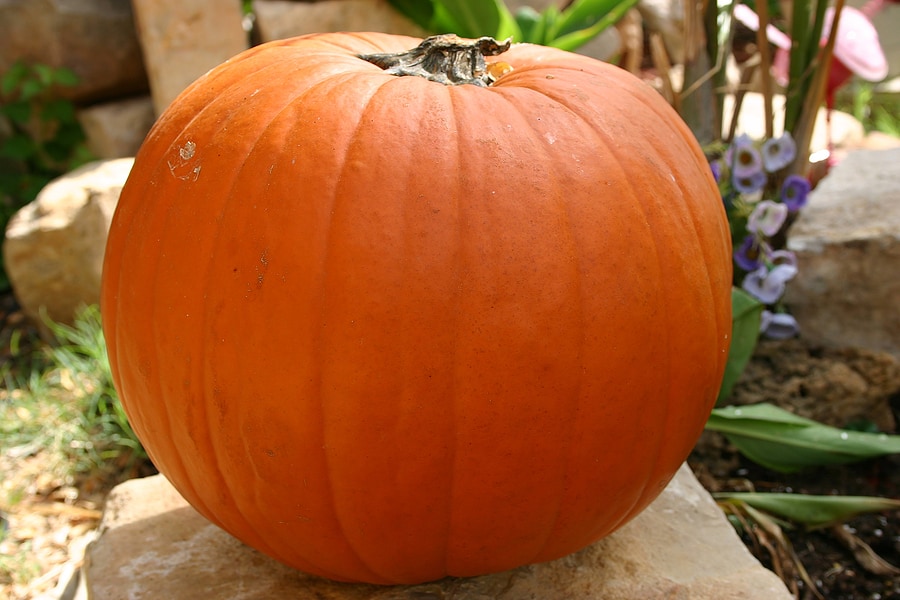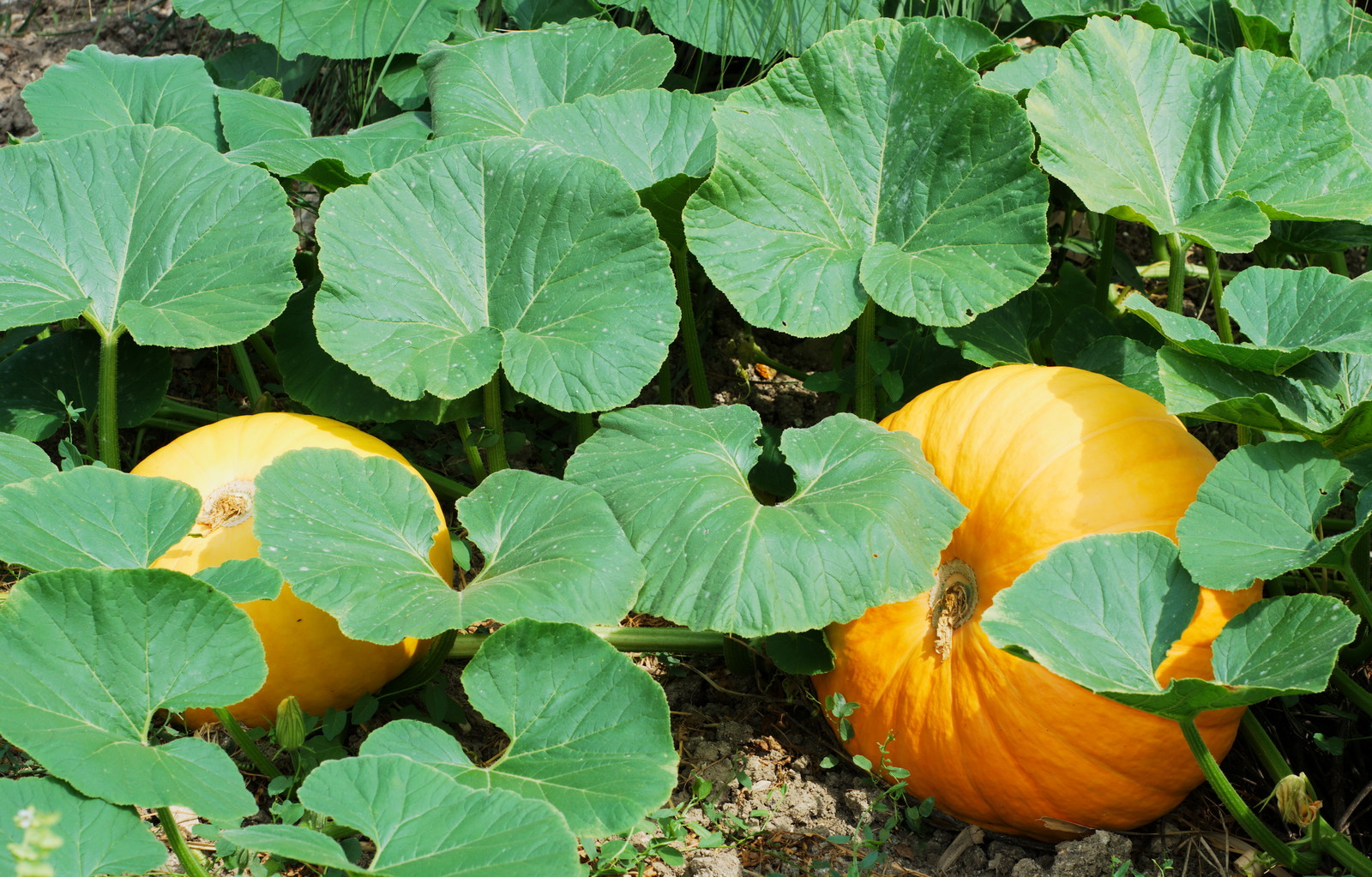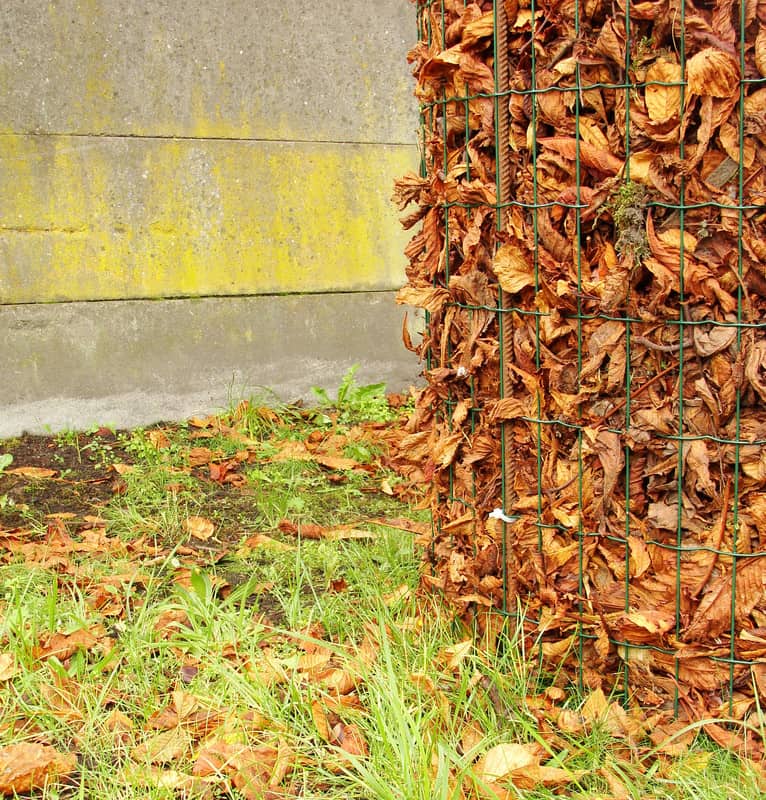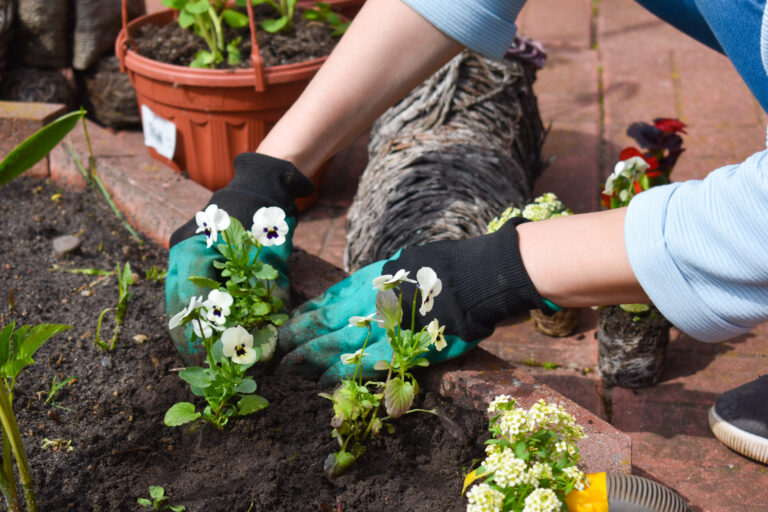Watering, Feeding, and Caring for Pumpkins: A Complete Guide
Caring for pumpkins isn’t complicated, but consistent watering, the right feeding schedule, and smart mulching can make a huge difference. In this guide, I’ll walk you through my step-by-step approach to growing healthy, vigorous pumpkin vines with fewer issues along the way.
Watering Pumpkins
Water pumpkin seedlings well, and keep the soil moist throughout the season; the roots need regular moisture. If plants look wilted before eleven o’clock in the morning, they need water. (Dig down in the soil; if the soil is dry at four inches down–water. If the soil is moist at three inches down, watering is good.) To avoid transmitting diseases, water at the base of each plant and keep the foliage dry. Leaf and fruit diseases are easily transmitted via wet foliage. Avoid handling plants when they are wet. It is not unusual for squash to wilt slightly on hot days.
Tips from my garden:
- Pumpkins require regular, even water to keep vines and fruiting growing without interruption. Give pumpkins 1 to 1½ inches of water each week (1 inch/2.5cm of water equals about 16 gallons/60.5 liters).
- Do not let the soil dry out. Slow, deep watering is best.
- Water at the base of plants using drip irrigation of a soaker hose. Avoid wetting leaves; wet leaves are susceptible to fungal diseases.
Feeding Pumpkins
Pumpkins are heavy feeders. I like to add plenty of aged compost or manure to the planting bed in advance of sowing. I add aged compost or manure at the bottom of each planting hole and throw in a buffer inch or two of native soil. This will get plants off to a strong start. Apply compost tea or manure tea at transplanting or two weeks after seedlings emerge. Feed again with compost tea in three weeks or when the first flowers appear. When the first fruits set, water each plant with compost tea or side-dress each plant with a shovel full of compost. If leaves are pale, I give plants a dose of fish emulsion. But be careful not to give pumpkins too much nitrogen; nitrogen will increase leafy growth but cut fruit yield.
Tips from my garden:
- Add aged compost and manure or commercial organic planting mix to the planting area before planting.
- Feed pumpkins an organic fertilizer high in phosphorus once plants are established; a 5-10-10 formula is good.
- Side dress pumpkins with compost or manure tea or a dilute fish emulsion solution every two weeks during the growing season.

Mulching Pumpkins
To avoid rot, I put 6 inches of straw, hay, or dry leaves under the fruit. I mulch when vines begin to lengthen. This will slow weed growth. Weeds compete with crops for water and nutrients. If the mulch gets wet, I set a board or shingle under each fruit. Early in the season, black plastic can be used to mulch pumpkins. Black plastic helps warm the soil earlier and keeps it warm; this, in turn, can speed up the growth of squashes.
Caring for Pumpkins
I’ve learned that managing vines, limiting the number of fruits, and preventing rot are key to producing larger, better-shaped pumpkins. Whether you’re growing for size, appearance, or an abundant fall harvest, following a few simple care steps—like pruning vines, protecting developing pumpkins from wet soil, and controlling weeds—can make a big difference. Here’s how to care for your pumpkins from fruit set to harvest for the best results.
Tips from my garden:
- Keep the planting area weed-free. Weeds compete for soil moisture and nutrients and harbor pests and diseases which can attack pumpkins.
- Allow just 2 or 3 fruits to mature on each plant.
- Set developing fruits on tiles, sheets of plastic, or wooden shingles so that they do not develop rot sitting on wet soil.
- Turn pumpkins as they develop to encourage an even shape. A pumpkin that is not turned may have a flattened side at harvest time.
- To grow pumpkins for large size, choose two or three fruits early for development; remove the remaining fruit and vines.
- When pumpkins have formed on a plant, pinch or snip off the fuzzy end of each vine. This will stop vine growth and the plant will put its energy into fruit growth. Vines without fruit can be pruned back to about 2 feet long.
- Remove new female flowers from vines once two or three fruits are growing on a plant.
Related Posts Start Here:
Getting Started
- Pumpkin Varieties You’ll Love to Grow
- Choosing the Right Pumpkin: Cooking vs Carving
- Pumpkin Seed Starting Tips
- How to Plant Pumpkins Successfully
- How to Grow Pumpkins in Containers
- Best Companion Plants for Pumpkins
Growing and Care
- Watering, Feeding, and Caring for Pumpkins: A Complete Guide
- Pumpkin Pollination: A Gardener’s Guide
- Common Pumpkin Pests and Diseases (and How to Stop Them)
Harvest and Beyond
- How and When to Harvest Pumpkins
- How to Store and Preserve Pumpkins After Harvest
- Five Ways to Cook Pumpkins
Bonus/Fun






